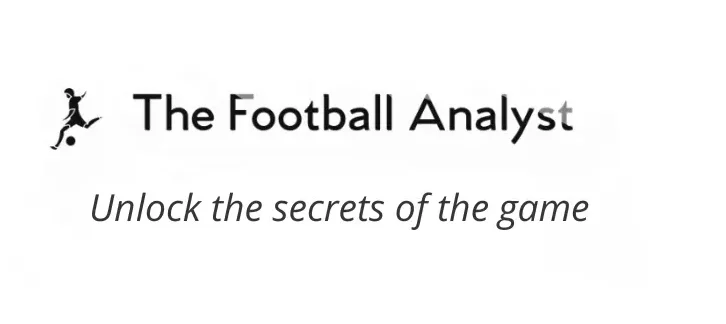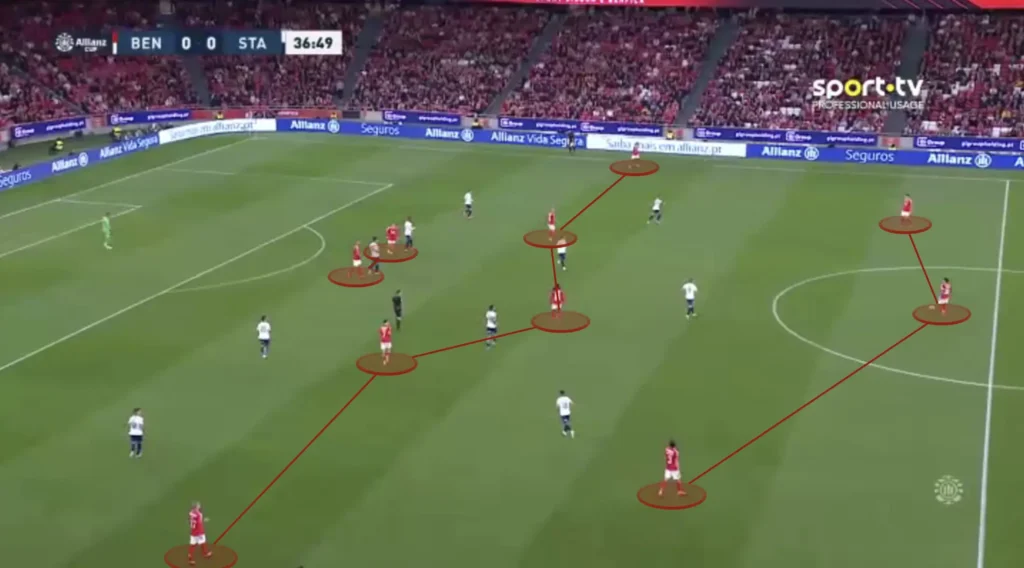In February 2025, South Africa’s women’s national team, Banyana Banyana, made a bold and historic move—selecting a squad largely composed of university football players. The team didn’t just participate. They won. As someone involved in university sports, this was a moment of pride and a powerful reminder of the depth and tactical intelligence that exists in our institutions.
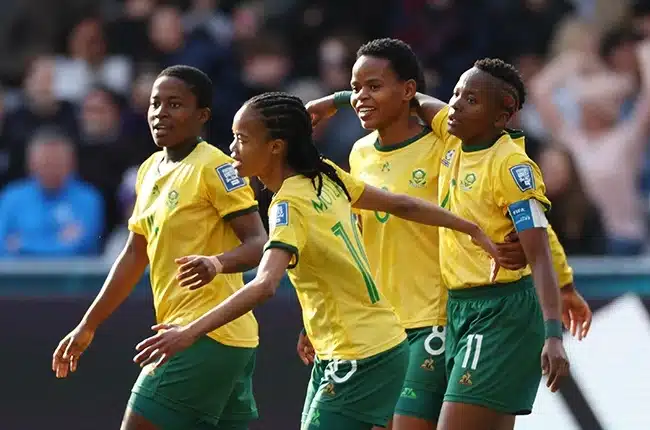
To better understand how we got here—and where the game is going—I sat down with a key figure in South African football history: Fran Hilton Smith, the former Technical Director of the South African Women’s National Team. A pioneer of women’s football development in South Africa and a long-serving voice in CAF and FIFA coaching education, Fran has been instrumental in building the tactical and structural foundation of the women’s game.
Before diving into tactics, it’s important to recognize something: South Africa remains one of the best footballing countries in Africa. This is no accident. The country boasts a professional league in the PSL that rivals the best on the continent in terms of commercial power, technical level, and fan engagement. And of course, South Africa made history as the first African nation to host a FIFA World Cup in 2010—an event that left behind world- class stadiums, training facilities, and a footballing legacy still visible today. That environment, rich in opportunity and infrastructure, continues to fuel player development across all levels, from township football to universities and into the national team.
1. Evolution of Tactics in Women’s Football Fran’s Hilton Smith:
“There’s now greater tactical sophistication. Teams use more complex build-up play, pressing systems, and formations. We’re seeing smarter defending—high pressing, mid-blocks, pressing traps—and significantly more tactical flexibility. Coaches adapt systems mid-game. The increased use of data and analysis has transformed preparation. And the tempo—especially transitions and counter-pressing—is faster. Players are tactically sharper and more aware.”
Tactical Deep Dive:
Today, elite women’s teams execute pressing traps within 7–9 seconds after a poor backward or lateral pass, achieving ball recovery in 56% of such scenarios (2023 FIFA Women’s World Cup technical report).
In structured build-ups, the double pivot in a 4-2-3-1 (two No. 6s) often touches the ball 42% of the time during the first phase, compared to just 29% a decade ago.
Mid-block setups are increasingly preferred, with block lines spaced no more than 12 meters apart to restrict vertical penetration.
High-press success (defined by forced errors within 3 passes) now stands at 48% efficiency globally, up from 33% in 2015.
Formational flexibility is also evident: teams now average 2.3 system changes per match (e.g., shifting from 4-3-3 to a 4-1-4-1 without a substitution).
2. Understanding Banyana Banyana’s Tactical Identity Fran’s Hilton Smith:
“Fast, technical, and tactically disciplined. Banyana blends South African flair with growing tactical structure. They use pace on the wings, fluid attacking rotations, and smart defending. Thembi Kgatlana’s speed allows them to exploit spaces behind defenses. Midfielders like Refiloe Jane and Linda Motlhalo control possession and dictate tempo. They defend compactly, minimizing spaces and disrupting opponents’ rhythm.”
Tactical Deep Dive:
Banyana Banyana typically sets up in a 4-2-3-1, morphing into a 4-3-3 during attacks with the No. 10 (Motlhalo) pushing into the left half-space.
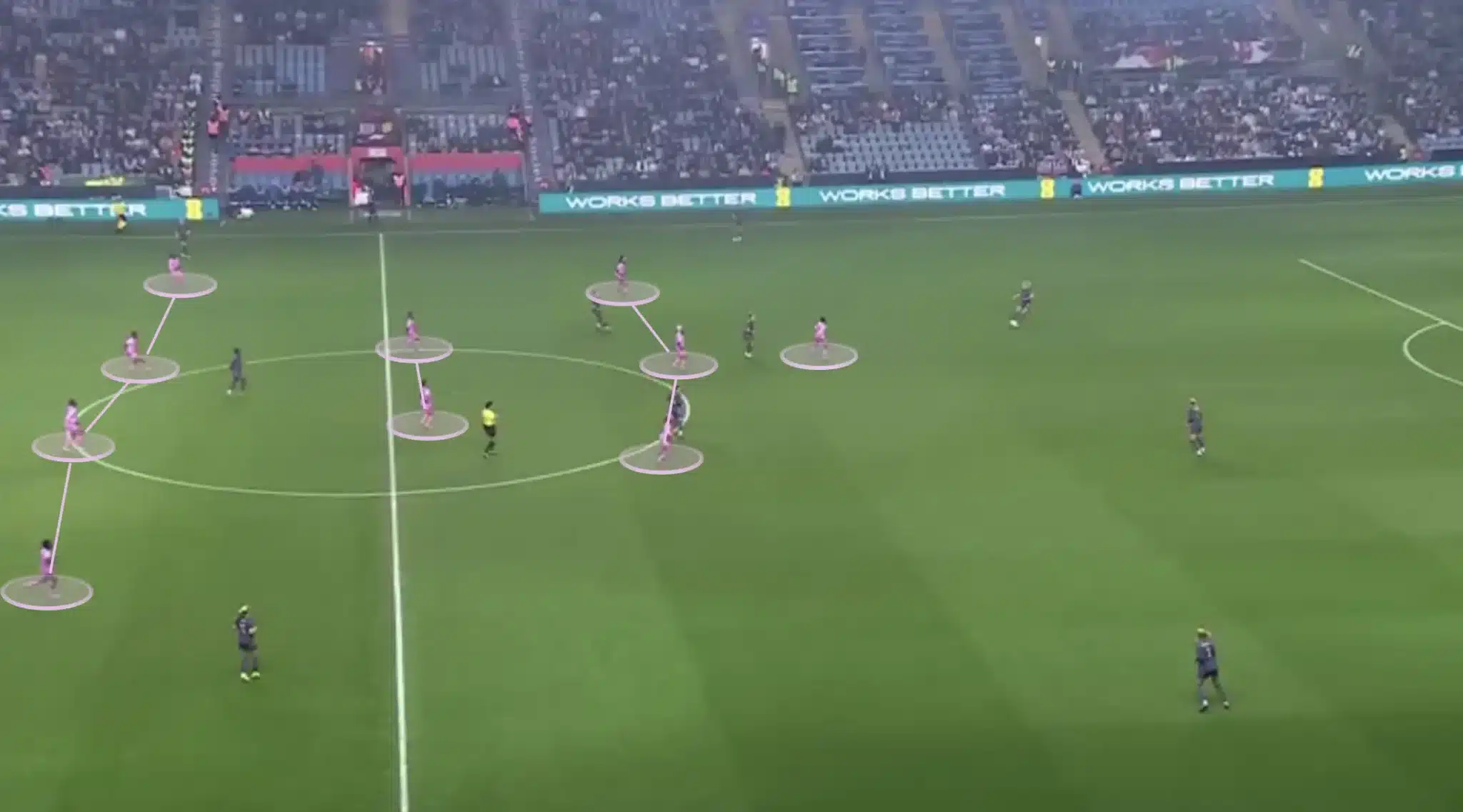
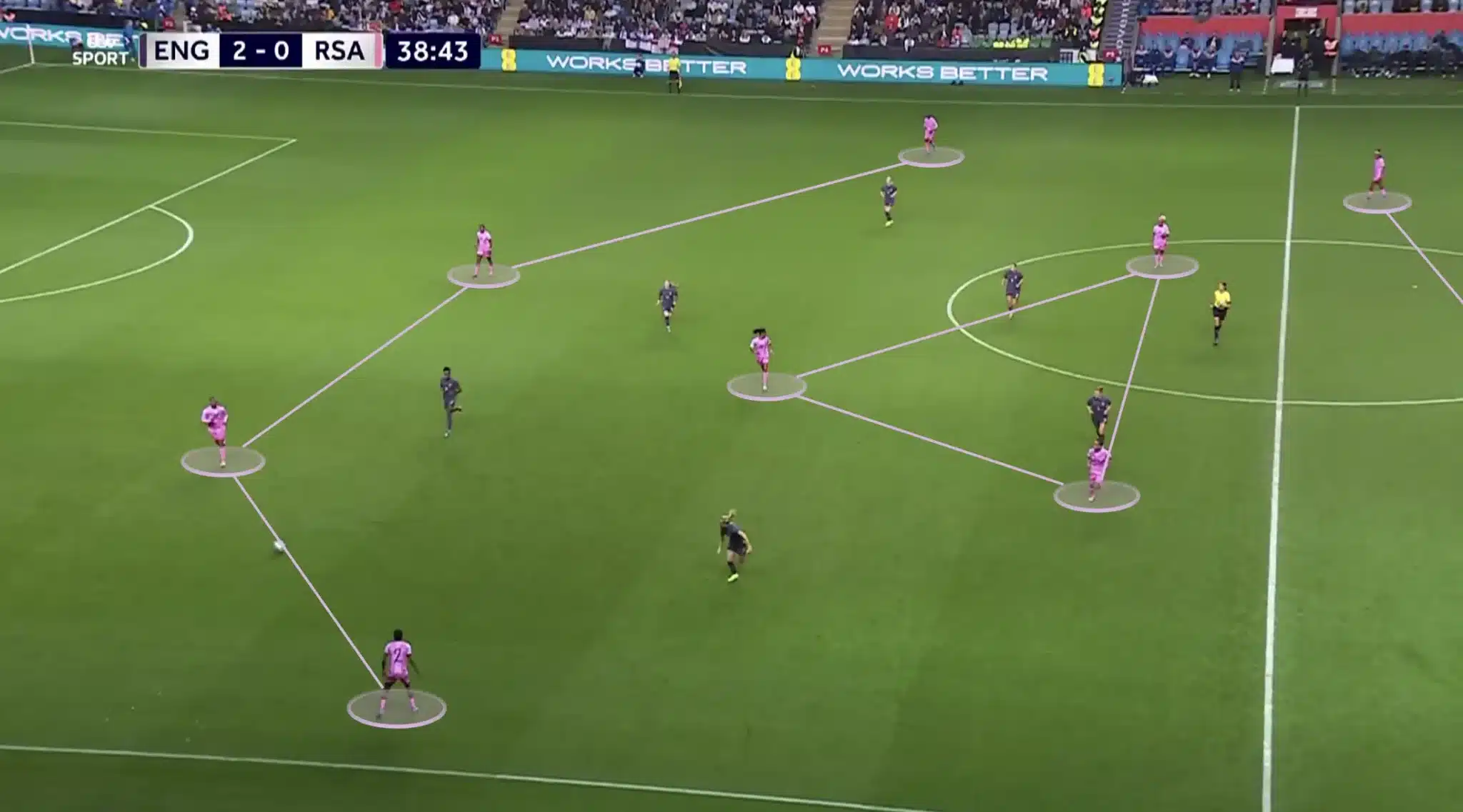
Possession dominance: Average pass completion of 82% against Tier 2 international opponents (CAF stats, 2024).
Speed exploitation: Kgatlana averages 32.1 km/h in sprints, ranking in the 95th percentile globally.
Defensive setup: When out of possession, Banyana compresses to a compact block of 24 meters vertically between the front and back lines, aiming to disrupt central build-ups.
Transitional threat: 60% of Banyana’s goals during the last WAFCON came from transitions within 10 seconds of regaining possession.
Their rotations involve the wide player (right winger) tucking in between the lines while the full-back overlaps, forming temporary 2v1 overloads.
3. Tactical Systems Thriving in the Modern Women’s Game Fran Hilton Smith
“The 4-3-3 is a major one—it emphasizes possession, width, and high pressing. With strong midfield triangles and dynamic wide players, it’s great for controlling games and creating overloads. Then there’s the 4-2-3-1. It offers balance—two holding mids allow fullbacks to attack, while the ‘10’ links transitions. It’s flexible and defensively stable.
Systems like the 3-4-3 and 3-5-2 are also growing—wingbacks stretch play, and the back three handles transitions well.”
Tactical Deep Dive:
4-3-3 System:
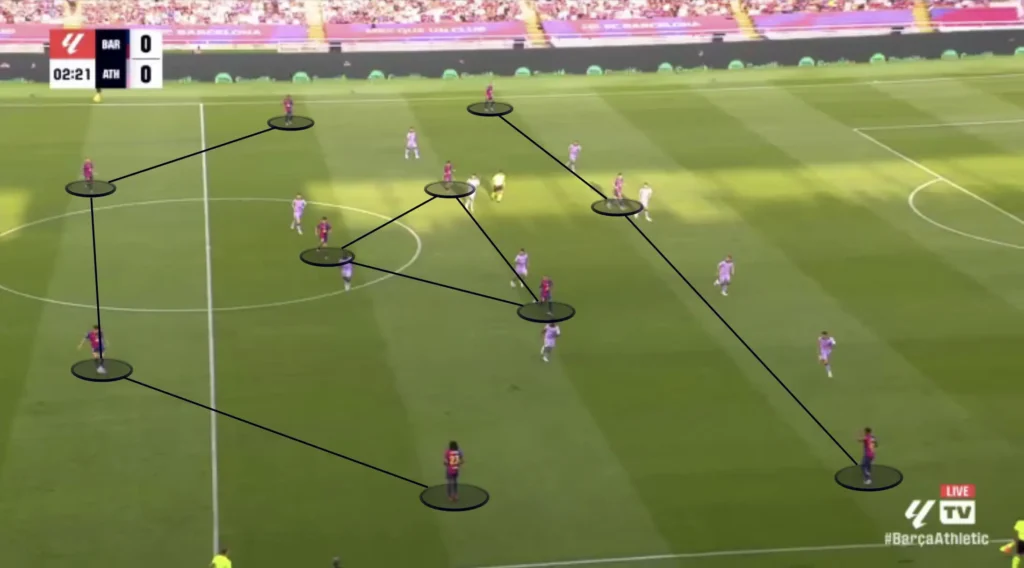
68% of teams at the last Women’s World Cup deployed some form of 4-3-3 in the group stages.
Uses inverted fullbacks (30% of build-up structures) to create central overloads while wingers stay high and wide.
Pressing trap: Forcing opponents toward the sideline in a 3-1-3-3 shape.
4-2-3-1 System:
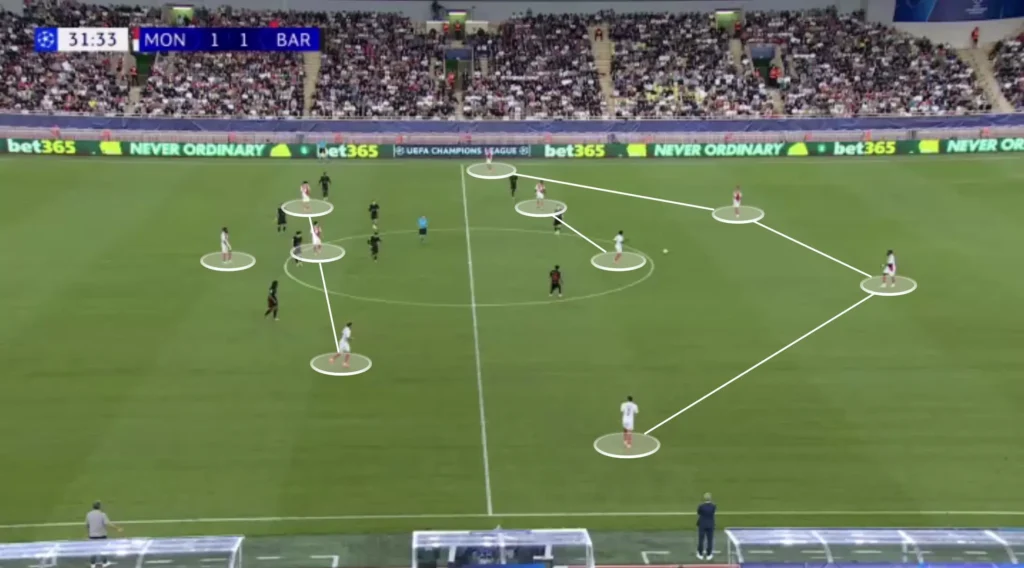
Two pivots (No. 6 + No. 8) shield transitions, resulting in 34% fewer counter-attacks faced compared to single-pivot systems.
No. 10 operates between opponent’s midfield and defensive lines, completing passes with an 84% success rate in zone 14.
3-4-3 / 3-5-2 Systems:
Wingbacks cover 8.1 km per match on average—critical for width and recovery transitions.
The back three, staggered into a “flat base” (3 center-backs), allows one to step into midfield, creating a numerical superiority of 4v3 in central zones during possession shifts.
Tactical trends:
Build-up phases increasingly use “Positional Play” (Juego de Posición), segmenting the pitch into 30-meter vertical lanes to occupy all five corridors.
Counter-press (“Gegenpressing“) efficiency: Ball recovery within 8 seconds stands at 57% success among top 10 FIFA-ranked women’s teams
4. University Football: A Global Pathway, Proven Locally
Tactical Deep Dive:
In NCAA Division 1 women’s soccer (USA), 67% of players called to the national team pool come directly from college programs.
South Africa’s February 2025 Banyana squad was composed of 61% university players — and they maintained a 79% pass accuracy across all matches played during the international window.
University programs are increasingly implementing professional-level tactical modules, such as:
Playing out from the back against high presses (simulated 4-3-3 traps). Shadow-play attacking rehearsals in 2-3-5 setups.
Specific high-intensity interval tactical sessions (e.g., 15×3 min high pressing drills).
Speaking with Fran Hilton Smith was a reminder of how far the women’s game has come— and how quickly it continues to evolve. From smarter pressing systems to increased use of data, from fluid positional play to structured defense, the modern game demands intelligence and adaptability.
And in South Africa—thanks to a professional league like the PSL, a World Cup legacy, and the growing influence of universities—we are developing players who can meet those demands
